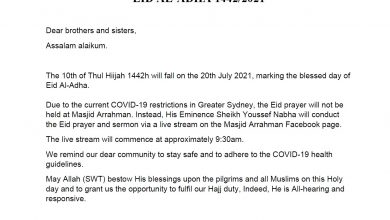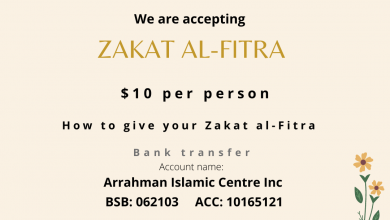Islamophobia: Australians intervene only 25 per cent of the time

Published by: the New Daily.
Written by: Rachel Eddie
New research showing Australians are hesitant to intervene in Islamophobic attacks proves racism against Muslims has been “normalised” and people fear for their own safety, experts have told The New Daily.
According to a Charles Sturt University (CSU) study, 243 verified attacks between September 2014 and December 2015 were reported to the Islamophobia Register Australia.
Disturbingly, nobody intervened in 75 per cent of the attacks.
The report into Islamophobia found 48 per cent of offline attacks were in crowded places like a supermarket or train station.
Attacks spiked during major news events, like the Sydney siege in December 2014 and the Paris attacks of November 2015.
But perpetrators referenced “terrorism” in only 11 per cent of reported incidents.
Why don’t people intervene to help?
Mehmet Ozalp, director of the Centre for Islamic Studies and Civilisation (CISAC) at CSU, said he believed people didn’t intervene because Islamophobia was entrenched in Australian society.
“Firstly, there’s a natural human reaction of not getting involved if there is something that is confronting,” Dr Ozalp told The New Daily.
“Secondly, I think Islamophobia or negative views on Muslims are beginning to be normalised in Australia, so people may treat it as either justified, or somehow they tolerate the behavior.”
Lisa A Williams, Senior Psychology Lecturer at UNSW, said passers-by could be concerned for their own safety. Other times, people might be unsure of what they’re witnessing.
“Maybe it’s unclear what’s actually going on. It could be two people joking among friends,” Dr Williams told The New Daily.
Passers-by were even less likely to help someone they didn’t identify with, she said.
“People are less likely to intervene when the person who needs help is part of their ‘out-group’, or are perceived to be.
“You can imagine if an incident happened in the streets of Sydney or Melbourne, the majority of onlookers would not identify as Muslim, so the likelihood they’ll intervene is lower.”
The bystander effect often stopped people from stepping in to help in emergency situations, Dr Williams said.
“People assume that someone else has already done something … when there are more people around, people assume someone else has helped.”
Who were the victims?
Almost all perpetrators (98 per cent) were white and most were male, the report said. Women tended to be the victims and were wearing Islamic head coverings 79.6 per cent of the time.
“Muslim women are obviously more visible in public, and they can be a visible target,” Dr Ozalp said.
“Women are more vulnerable to a male attack. I think they’re being selected deliberately as a victim.”
Shockingly, about 30 per cent of women targeted had children with them at the time. Dr Ozalp said that showed a disregard for the safety of children.
“It puts women at a greater risk and vulnerability because they have to think about their safety as well as their children’s safety,” Dr Ozalp said.
There would “definitely” be effects on children, but that would need to be studied further, he said.
“That could actually contribute to an identity crisis, and most significantly I would think that they don’t feel that they’re considered Australian.
“Their sense of belonging would be affected.”
In one of the complaints, a woman said her daughter asked her not to walk anywhere after numerous attacks.
“My daughter has commented on how worried she is for me and asked me not to walk anywhere,” the woman said.
Another woman was pregnant when she was attacked and said she had never felt so afraid or vulnerable.


